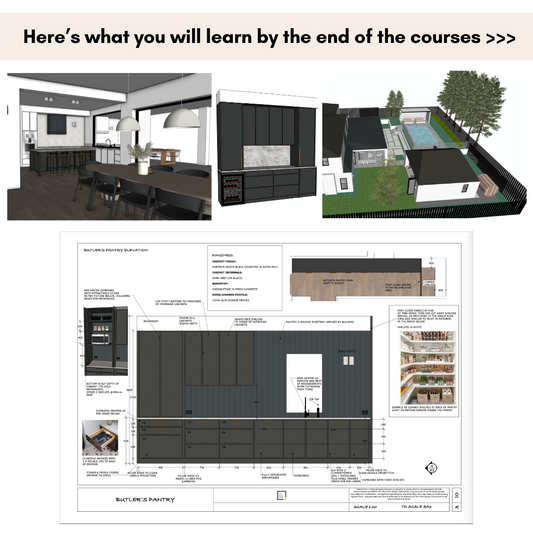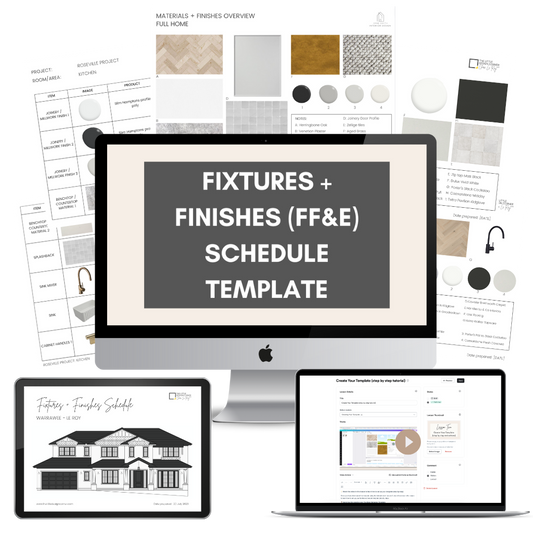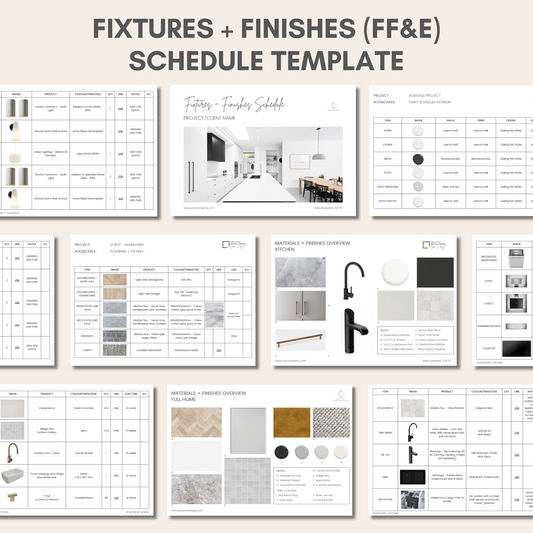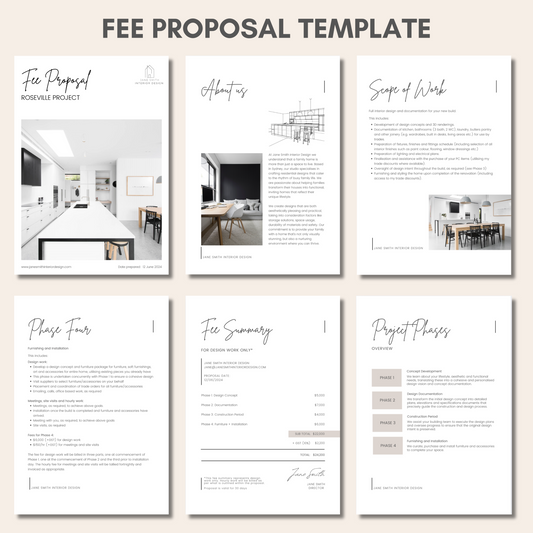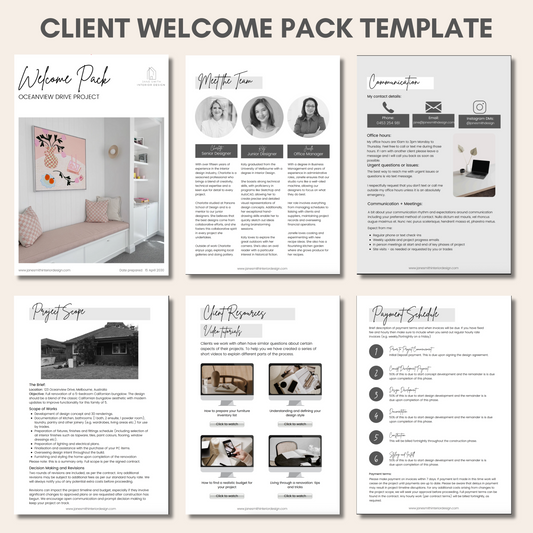Over my years working as a designer I’ve learned a lot about building and renovation/remodelling and I have been on a lot of construction sites. And for most residential projects (i.e. family homes) I work on there is a typical workflow that a project moves through.
In this post I’m sharing a typical construction workflow for a residential project and I will walk you through all the stages involved from start to finish when building a new home or extension.
A typical construction workflow
Here is an example of a typical construction workflow for a residential home build or extension project.
Keep in mind I’m in Australia and I’m less on top of how construction works in other parts of the world. My guess is that it is largely the same as what I’m laying out here, but if you’re not in Australia you may find some of the stages below are called different things or you perhaps you do things in slightly different ways.
Every project is different and the workflow for each construction project will vary slightly from this workflow, but if you are building from the ground up (e.g. a brand new home), or adding an extension to an existing house, then you more than likely move through most of the stages below.
Keep in mind this is all about the order that a home is built in from a construction perspective. The post doesn’t talk much about the design process itself, which I share in other blog posts on my site. You can browse them HERE.
Stage 1: Design and Pre-Construction
This is all the work that happens before you start construction.
-
Create your budget
-
Appoint building designer/architect and prepare design and construction drawings (they will appoint consultants as needed e.g. engineers, surveyors)
-
Site survey (a surveyor will plot your land, trees, neighbouring properties, boundaries etc.)
-
Tender your project to builders (get at least 3 quotes and make sure each are quoting on exactly the same scope to get accurate quotes you can compare)
-
Choose a builder (or do your owner builder qualifications, like I am in the middle of now)
-
Sign contract
-
Council applications and approvals
Stage 2: Preliminaries and Base
This may seem like a boring part of the project but it’s actually super important because if things go wrong at this stage it can have a big flow on to the rest of your build.
In this stage you are laying the foundation for your building and everything that happens next will be built on this foundation.
-
Preliminaries
-
construction certificates and permits
-
insurances
-
site fencing and signage
-
soil testing (not always needed)
-
temporary toilet/services
-
-
Demolition (if needed)
-
Site levelling
-
Peg out (measuring and marking out the design using coloured string)
-
Underground connections, drainage and pipework - e.g. plumbing, sewerage, electrical
-
Excavation (cut and fill) - a rough mark out of the foundation footprint will be made by an excavator.
-
Footings poured
-
Slab formwork and preparation (e.g. pest control, slab drainage, moisture barrier)
-
Pour concrete slab
Stage 3: Framing
This is where the skeleton frame of the house will be built on the slab/foundation.
-
Framing (e.g. timber framing, structural panels, bricks for double brick home, structural steel)
-
Things people sometimes don’t realise at frame stage:
-
shower niches or other niches will need to be decided by now as these go in at framing
-
pelmets or recesses for blinds or curtains are framed in at this point and can be hard to fix later
-
-
Roof trusses
-
Floor joists (for multi level homes) and structural flooring laid
Stage 4: Lock Up
This stage is about getting the house to the point of being able to be ‘locked up’ - so the final parts of the external works are finished off so trades can move inside for fixing and fit off.
-
Windows and doors
-
Waterproofing, wrapping and cladding (or brick veneer)
-
Fascia and Guttering
-
Roof tiling/sheeting and flashing
-
Solar panels installed (or sometimes happens a little later)
-
Internal walls
-
Garage door install
-
Temporary (or final) external doors installed
-
Electrical rough in/conduit
-
Plumbing rough in
-
Insulation added
Stage 5: Fixing and Fit Off
This is where work moves inside and the house starts to really take shape.
-
External painting
-
Gyprock/plasterboard to ceilings and walls
-
Skirting and architraves installed (crown moulding/base boards)
-
Ducted air conditioning/heating installed (final vents and panels added later)
-
Wet areas
-
waterproofing
-
tiling
-
plumbing fit off phase 1 (bath, vanities, toilets)
-
-
Carpentry (stairs, internal doors, built in elements)
-
Electrical fit off (e.g. adding in GPOs, data points, light fixtures, TV connection etc.)
-
Cabinetry and joinery (e.g. kitchen, laundry, wardrobe) install
-
Stone install (e.g. bench or counter tops)
-
Shower screen and mirror installs
-
Floors laid (e.g. floorboards, carpet or anything floating that isn’t tile)
-
Internal painting
Stage 6: Completion
This final stage is where the house is finished off and getting ready to move in to.
-
Final plumbing install (PC items like shower heads, taps)
-
Final electrical fix (feature light fixtures such as pendants or wall lights, ‘smart home’ features)
-
Air conditioning/heating final fit off - e.g. adding vents and operating panels
-
Carpentry finishes (e.g. door handles, latches or other smaller carpentry items)
-
Site clean - skip bins and rubbish removed, clear out of all debris and building waste
-
Defecting (e.g. finding areas that need to be fixed or finished prior to final payment)
-
Appliances installed (this normally happens last minute to avoid theft on site)
-
External building works such as:
-
paths and driveways
-
hard landscaping
-
grass
-
planting
-
Stage 7: Handover and Fun Stuff!
This is where you get to move in and start adding your furniture and styling pieces. Sometimes you will still have trades coming and going to fix up any defects that have been identified or that are identified after move in.
-
Final internal and external site clean
-
Handover (you get the keys!)
-
Make sure home insurance is updated/activated
-
Furniture install
-
Styling install
-
Artwork install (specialists sometimes used for expensive artwork)
-
TV mounted (if not already done during fit off)
-
Move in and enjoy!
I hope laying out the construction stages like this is helpful to some of you. I know I would have found this hugely helpful back when I had no idea what I was doing! :)





